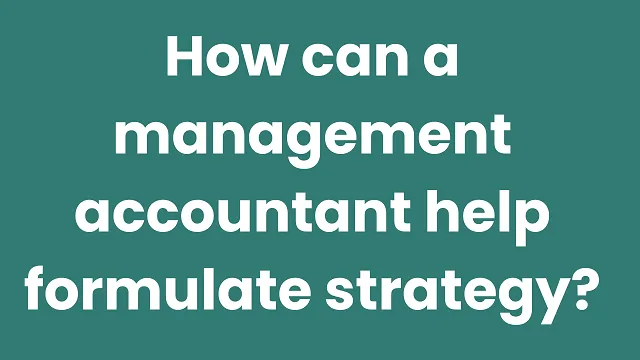Question
Describe the business functions in the value chain.
Answer
Michael Porter has described five functions of value chain as detailed below. When these five functions are in motion, the company is successful in generating profits for the products/service offered.
- Inbound logistics- This is the first function in the value chain. Companies need to develop ways to receive, store and distribute the raw materials to create the product. The inbound logistics should be managed efficiently to create value for the business.
- Operations- Operations is the process of using the raw materials to create the product. The more the efficient the operations are the more the value for the company by cost savings.
- Outbound logistics- The distribution of the final product to the wholesalers, distributors and the end-users come under this function. The more the efficient this function, the company saves immensely adding more value to the business.
- Marketing- Marketing and sales is the fourth business function in the value chain. Product awareness is created among consumers through efficient marketing.
- Service- This is the last and final function in the value chain. Service relates to post sales of the product such as installation and other customer service aspects. A strong service in the supply chain provides the customers with great support thus increasing the value for the company.
The above are called primary activities in the value chain. The supporting activities that support the primary activities are:
- Procurement- the purchasing functions-how the raw materials are obtained for manufacturing the product.
- Technology development- how new products are designed and developed in the Research and Development phase in process automation.
- Human resource management- involves hiring, training and retaining appropriate employees to help develop, design, create and market the product.
- Firm infrastructure- refers to other business functions such as managing, accounting, finance, quality control, etc.
Send Us Your Question
Understanding Business Functions in the Value Chain: A Comprehensive Guide
In today’s highly competitive business environment, a company’s success is increasingly tied to its ability to optimize each stage of its operations. The value chain—a concept introduced by Michael Porter in his 1985 book Competitive Advantage—offers a structured way to analyze these operations and identify opportunities for growth and improvement. At its core, the value chain represents the series of business functions that work together to create value for the customer, from product design to final delivery.
This comprehensive guide explores the key business functions within the value chain and highlights how they contribute to operational efficiency, customer satisfaction, and overall profitability. Understanding these functions is essential for businesses seeking to gain a competitive edge and achieve long-term success.
What is the Value Chain?
The value chain breaks down a company’s activities into primary and support functions, each contributing to the creation of value. The primary activities are directly involved in the production, marketing, and sale of the product or service, while support activities provide the necessary infrastructure and resources to ensure efficiency and quality.
Key Business Functions in the Value Chain
1. Inbound Logistics
Inbound logistics involves the receiving, storing, and distributing of raw materials and inputs. This business function is crucial for ensuring that materials are available when needed for production. Effective inbound logistics systems can lower costs by optimizing inventory levels and streamlining transportation processes.
2. Operations
Operations encompass the processes that transform raw materials into finished products or services. This includes manufacturing, assembly, and quality control. A well-run operations function is key to improving efficiency, minimizing waste, and ensuring the timely delivery of high-quality products to the next stage of the value chain.
3. Outbound Logistics
Once products are ready, outbound logistics manages the storage and distribution to customers. This function involves warehousing, inventory management, order fulfillment, and transportation. Efficient outbound logistics ensure that products reach customers quickly and cost-effectively, which is critical for maintaining customer satisfaction and reducing costs.
4. Marketing and Sales
Marketing and sales are essential for generating demand and converting potential customers into buyers. This function involves market research, pricing strategy, advertising, and customer relationship management. A strong marketing and sales function drives revenue by increasing brand awareness, targeting the right audiences, and providing effective customer engagement.
5. Customer Service
Customer service ensures ongoing customer satisfaction by addressing concerns, providing support, and managing returns or repairs. This function is critical for building customer loyalty and retaining business. A well-functioning customer service department can enhance the customer experience and help differentiate a business from its competitors.
Key Business Functions in the Value Chain
1. Procurement
Procurement involves sourcing the materials, equipment, and services needed for the company’s operations. Efficient procurement ensures that high-quality materials are purchased at competitive prices, contributing to lower production costs and improved product quality.
2. Technology Development
This function includes research and development (R&D), innovation, and process improvements. By investing in technology and staying ahead of industry trends, companies can enhance productivity, create superior products, and maintain a competitive advantage.
3. Human Resource Management
Human resources manage recruitment, training, employee development, and compensation. A skilled workforce is essential for executing value chain activities effectively. By fostering a motivated and capable team, companies can drive innovation, increase efficiency, and improve the overall performance of the business.
4. Firm Infrastructure
Firm infrastructure provides the foundation for all business functions, including management, finance, legal, and administrative support. This function is responsible for strategic planning and decision-making, ensuring that all value chain activities are aligned with the company’s goals and vision.
Optimizing the Value Chain for Success
To maximize the value generated at each stage of the value chain, businesses must focus on continuous improvement and coordination among all functions. Some key strategies for optimizing the value chain include:
- Streamlining processes to reduce waste and inefficiencies.
- Leveraging technology to automate tasks and enhance production speed.
- Building strong supplier relationships to ensure a reliable flow of materials and lower costs.
- Investing in employee training to ensure staff have the skills and knowledge to perform their roles effectively.
- Enhancing customer service to improve satisfaction and retention.
Conclusion
The value chain is a powerful tool for businesses to understand how different functions contribute to creating value for the customer. By analyzing and optimizing each stage—from inbound logistics to customer service—companies can improve operational efficiency, reduce costs, and enhance customer satisfaction. Understanding the role of each business function within the value chain allows companies to better align their activities with their strategic goals, ultimately leading to greater profitability and competitive advantage.
A well-managed value chain positions a business to thrive in the modern marketplace, delivering high-quality products and services that meet the evolving needs of customers while driving growth and innovation.



